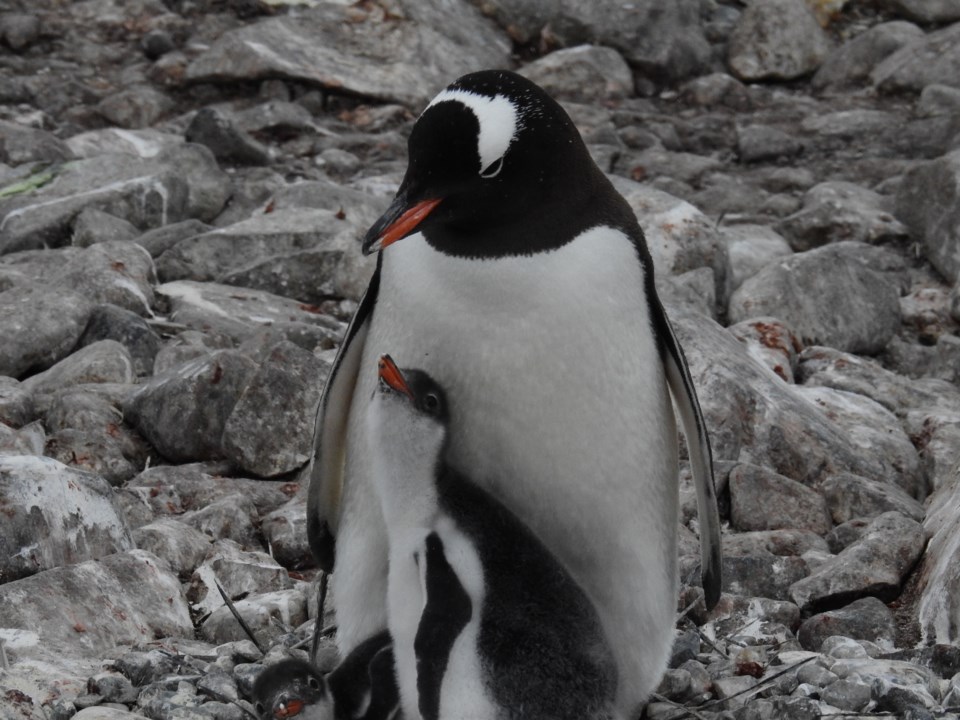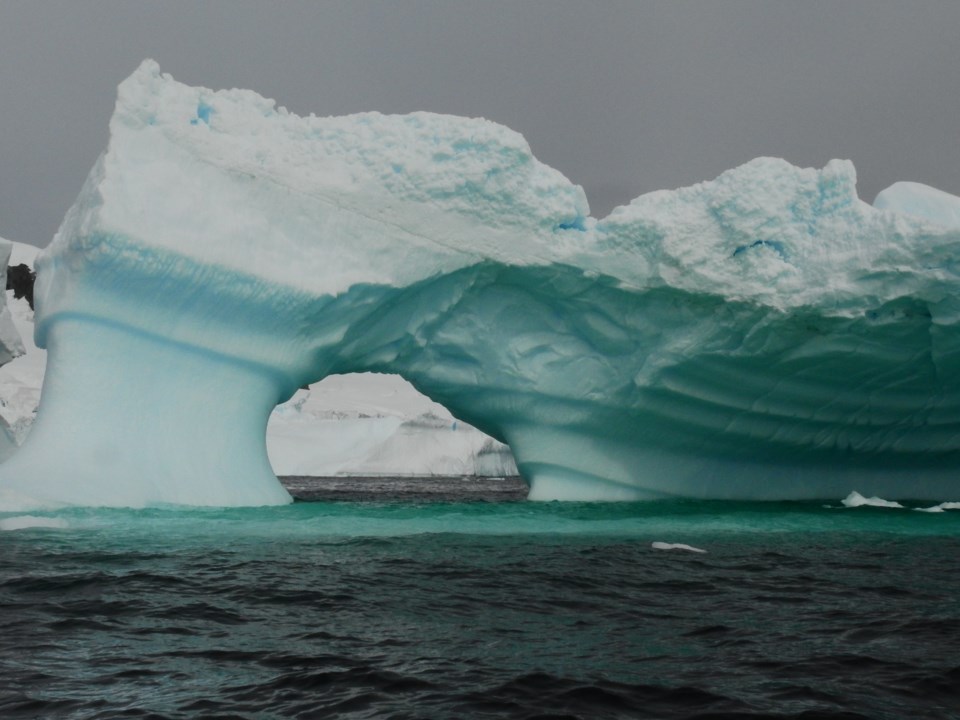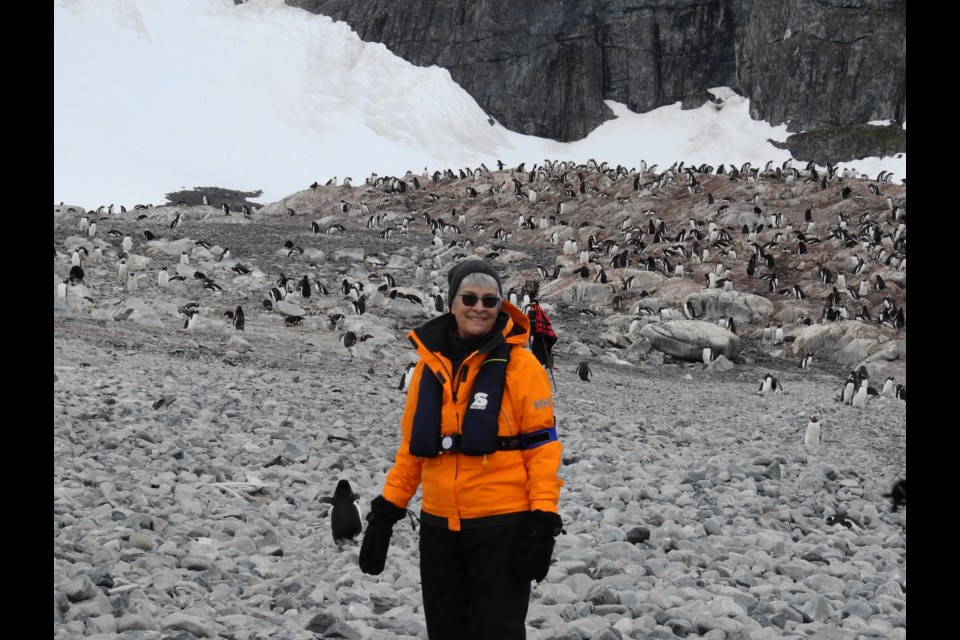The following is a column from semi-regular MidlandToday columnist Peter Bursztyn about his trip south of the equator. This is Part 2 in a series. To read Part 1, click here.
The Southern Ocean lies in an area of strong, steady westerly winds. If you could tip the globe to have a clear view of Antarctica, you would see no land anywhere to block this wind. At this latitude in the northern hemisphere, Eurasia, North America and Greenland impede our equivalent westerlies, reducing their strength.
The shape of South America deflects the "roaring forties" southward. The tip of South America and the Antarctic Peninsula form a giant funnel, increasing wind velocity. Unimpeded, this wind kicks up waves – sometimes towering. That’s where we are heading.
Even though I don’t suffer from “mal de mer,” it’s worrying to see the crew scattering seasickness bags around the ship. We left the shelter of the islands around the tip of South America to enter the Drake Passage on the afternoon of Jan. 31. The brisk westerly wind did its work, and the ship has begun to rock.

The temperature is surprisingly mild considering how close we are to the Antarctic — 15 Celsius at 2 p.m.
By 7 p.m., it dropped to 10 C, and at bedtime, around 10:30 p.m., it is 5 C. That’s the effect of crossing the line of convergence separating polar seas from the rest of the ocean circulation.
To make it interesting, the waves are over five metres. Despite deploying stabilizers, by midnight on Jan. 31, the ship was rolling about like a drunk, as were most passengers.
By morning, the seas moderated slightly — things were no longer falling off shelves. However, the wind still whistled through the weather stripping, and temperature dropped to 2 C.
Outside, giant petrels and wandering albatross follow, hoping fish will be brought to the surface in our wake.
Indoors, we there is a virtual university of talks on pinnipeds (seals), polar exploration, underwater creatures’ (whales and seals) “music”, and on the “iconic Antarctic residents” (penguins). There’s hardly time to overindulge on the gourmet meals.
I really appreciate Seabourn’s smaller portions. As a child, I was forced to finish everything on my plate with the exhortation “there are children starving in China” (China isn’t starving today, but other folk are), and the threat: “It will taste better tonight, hot, than it will tomorrow morning, cold!” Of course, you can order a second appetizer or main course if you wish.
Ten days ago, I was eager to escape Barrie’s winter – this dismal, rainy one particularly. On Feb. 3, pulling back the curtains, I see ... winter!
Anchored in Yankee Harbour, in the South Shetland Islands, we are on choppy water surrounded by glaciers and snow — my thermometer reads 1 C.
I fled south to escape winter — perhaps overshooting by thousands of kilometres wasn’t smart!
But the sun is shining, and on shore Gentoo penguins march. They are smaller than expected, like a small turkey. They commandeered a spit of land for rearing their chicks, many of which looked fully adult, but a few were still moulting into their natty (waterproof) swimwear.
On the morning of Feb. 4, we stopped at Cuverville Island, not far from Palmer Station and Port Lockroy. Before the boat stopped moving, I saw three humpback whales just outside my stateroom window. I tried to take photographs, but this proved futile. They do leap out of the water, but where would their next leap be? The fantastic photographs we have all seen are the result of days and weeks patience.
This place has penguins aplenty. Where Yankee Harbour had hundreds, Cuverville has thousands, many swimming, porpoise-like at high velocity. Why? Are they feeding? They’re clearly not fleeing a leopard seal or an orca, we didn’t see any today. Perhaps they are just having fun...
On shore there are small chicks, large chicks and sad-looking penguins which lost chicks. Gentoo penguins build “cozy” nests from small pebbles to keep their eggs dry. There is a shortage of small pebbles, so they steal pebbles from neighbours.
Researchers set up an experiment by painting the pebbles of three nests either red, blue or green. At the end of the season, these coloured pebbles were found scattered throughout the colony.
Some penguins build nests on the rocky beach, while others choose to clamber up steep snow slopes to reach exposed rocks higher up. In the Cuverville rookery, winds clear snow off these rocks. They become snow-free earlier in the season than the beach.

For the birds, there is a trade-off. Those nesting high up expend a lot of energy reaching their nests, something they must do at least daily. (One can become tired just watching them climb their penguin pathways.) However, they are able to lay their eggs a week or so earlier than birds nesting on the beach.
It takes a pair of penguins to successfully rear chicks. One regurgitates krill directly into the chick’s mouth and stands guard, while the other goes out to sea for food.
After 25 days, the chick has grown enough to defend itself against skuas — which are the major predator of penguins on land. Now, the chick needs so much food it must be left alone while both parents forage. Extra energy is also required to grow the elegant adult “outfit.”
Once this is done, the chicks go to sea to feed themselves. However, they continue returning to the nest for a few weeks where the parents may supplement its diet.
When will my child finally become self-sufficient and leave home?
After a penguin parent stops feeding chicks, they begin their seasonal moult. A moulting penguin can’t swim, so cannot eat. Adults which lose chicks begin to moult as soon as the chick dies. These are the sad, scruffy-looking, full-size penguins wandering the colony.
By mid-afternoon on Feb. 4, the wind kicked up and we abandoned shore excursions to move on to Neko Harbour. We had hoped to bring spare parts, supplies and mail to Palmer Station, an American research post. A boat from Palmer rendez-voused with us at 7:30 p.m. We stopped, turned broadside to the wind so creating slightly calmer water to make the transfer less hazardous. This had to be abandoned, as the weather was simply too wild.
Looking outside at 9 p.m., the wind has increased. Every wave now has a white cap with spindrift.
I am hoping the wind moderates tomorrow morning. Mind you, I am not sure what “morning” means at 65 degrees south latitude six weeks past the solstice.
Canadians are accustomed to winter days being short. Here the sun will set around 11 p.m. and rise at 4 a.m. Tonight will not get completely dark.
Peter Bursztyn is a self-proclaimed “recovering scientist” who has a passion for all things based in science and the environment. The now-retired former university academic has taught and carried out research at universities in Africa, Britain and Canada.
